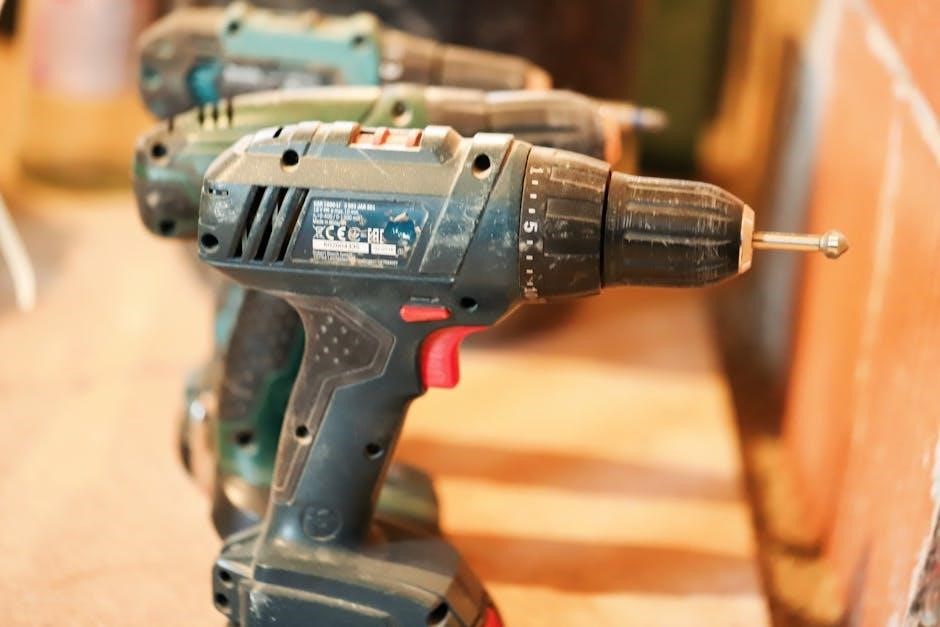
A full range clarinet finger chart PDF is an essential tool for clarinetists‚ providing detailed finger placements for notes across the instrument’s entire range. It includes basic and alternate fingerings‚ helping players master complex passages and improve tone quality. This comprehensive guide is invaluable for learners and educators alike‚ offering clear visuals and practical applications to enhance clarinet mastery.
Overview of the Clarinet and Its Fingerings
The clarinet is a single-reed woodwind instrument with a complex system of keys and finger holes. Its fingering system varies depending on the type‚ such as Boehm‚ Albert‚ or Oehler systems. The Boehm system‚ widely used in orchestras‚ features a key arrangement that allows for precise finger placement. Clarinet fingerings involve covering specific holes or keys to produce different notes. The full range clarinet finger chart PDF provides a visual guide for these placements‚ covering the low‚ middle‚ and high registers. This chart is essential for mastering the instrument‚ as it illustrates both basic and alternate fingerings‚ helping players navigate complex passages‚ trills‚ and special effects. Its detailed layout ensures clarity for learners and experienced musicians alike.
Importance of a Full Range Clarinet Finger Chart
A full range clarinet finger chart is indispensable for mastering the instrument‚ as it provides a complete visual guide for finger placements across the clarinet’s entire range. This chart is crucial for understanding the relationships between notes‚ keys‚ and fingerings‚ especially in complex passages. It helps players develop proper technique‚ ensuring consistent tone and pitch accuracy. The chart is particularly valuable for learners‚ as it clarifies finger positions for both basic and advanced notes. Additionally‚ it offers alternate fingerings‚ which can enhance performance in challenging musical scenarios. By studying this chart‚ musicians can improve their ability to navigate the clarinet’s low‚ middle‚ and high registers seamlessly‚ making it an essential tool for both practice and performance.

Structure of the Clarinet
The clarinet consists of the barrel‚ upper joint‚ lower joint‚ and bell. These parts work together to produce sound when air is directed through the reed and mouthpiece.
Parts of the Clarinet and Their Functions
The clarinet is constructed from several key components‚ each serving a specific role in sound production. The barrel connects the mouthpiece to the upper joint‚ influencing intonation and tone. The upper joint contains keys and holes that are covered by the fingers to produce notes‚ while the lower joint includes additional keys for lower register notes. The bell amplifies and projects the sound. The reed‚ attached to the mouthpiece‚ vibrates to create the clarinet’s distinct tone. The mouthpiece holds the reed in place‚ and the ligature secures it. Understanding these parts is essential for using a full range clarinet finger chart effectively‚ as it helps players identify proper finger placements and key usage.
Key System and Finger Holes
The clarinet’s key system and finger holes are intricately designed to produce a wide range of notes. The Boehm system ‚ the most common‚ features a complex arrangement of keys and rings that allow for precise finger placements. Each finger hole corresponds to specific notes‚ and covering or uncovering these holes‚ often in combination with keys‚ changes the pitch. The placement of the left-hand thumb on the thumb hole or register key is crucial for octave adjustments. A full range clarinet finger chart PDF illustrates these placements‚ making it easier for players to navigate the instrument’s fingerings. This system ensures clarity and accuracy‚ enabling musicians to achieve optimal tone and intonation across the clarinet’s entire range.

Basic Clarinet Fingerings
Basic clarinet fingerings start with covering the register key with the left thumb and the first hole with the left index finger. Adding right-hand fingers progresses to higher notes. The full range clarinet finger chart PDF provides clear guidance for these foundational placements‚ ensuring proper technique and tone production from the beginning.
Finger Placement for Beginner Notes
Finger placement for beginner notes on the clarinet starts with the left thumb covering the register key and the left index finger on the first hole. This setup allows playing the note E. Adding the right-hand fingers progressively covers more holes‚ enabling higher notes. The full range clarinet finger chart PDF provides visual guidance‚ marking closed holes with symbols and open holes with none. Beginners should ensure proper finger alignment to avoid muffled tones. The PDF details each note’s fingering‚ helping learners master basic placements. Regular practice with this chart enhances finger dexterity and tone quality‚ laying a solid foundation for advanced techniques.
The clarinet finger chart PDF introduces players to the essential fingerings for both hands‚ ensuring proper technique from the start. The left hand typically covers the lower register keys‚ with the thumb operating the register key and the index finger on the first hole. The right hand manages the upper register‚ with fingers placed on tone holes and keys. The chart uses symbols like dots for covered holes and circles for open ones‚ guiding players to the correct finger placements. This clear visual system helps beginners understand how to produce notes accurately. By mastering these fingerings‚ players can transition smoothly between notes and registers‚ building a strong foundation for more complex music. The PDF’s detailed layout ensures clarity and ease of use for learners of all levels.

Advanced Clarinet Fingerings
Advanced clarinet fingerings include alternate techniques for complex passages‚ improving pitch accuracy and tone quality. These fingerings often involve subtle key adjustments and trills for nuanced musical effects‚ enhancing overall performance.
Alternate Fingerings for Complex Passages
Alternate fingerings are crucial for navigating complex passages on the clarinet. They offer solutions to challenging technical demands‚ allowing for smoother transitions and improved dexterity. By using specific key combinations and finger substitutions‚ players can maintain consistent tone and pitch accuracy. These fingerings often simplify intricate sequences‚ reducing finger strain and enabling faster tempos. The full range clarinet finger chart PDF provides detailed diagrams‚ highlighting these alternatives for both low and high registers. This resource is invaluable for advanced players seeking to refine their technique and deliver polished performances. Regular practice with alternate fingerings enhances musicality and expands the clarinetist’s expressive capabilities.
Trill Fingerings and Special Effects
Trill fingerings and special effects on the clarinet add depth and variety to musical performances. The full range clarinet finger chart PDF includes specific finger placements for executing trills seamlessly. These fingerings enable quick key transitions‚ ensuring smooth pitch alternations. Special effects‚ such as glissando or multiphonics‚ are also addressed‚ providing players with techniques to create unique sounds. The chart highlights alternative keys and breath control methods for achieving these effects. By mastering these advanced fingerings‚ clarinetists can enhance their expressive capabilities and deliver captivating performances. Regular practice with these techniques expands the player’s technical and artistic range‚ making the finger chart an indispensable resource for achieving musical excellence.

Full Range Clarinet Finger Chart
A full range clarinet finger chart PDF offers detailed finger placements for the clarinet’s entire range‚ helping musicians master each note’s fingering for precise intonation and tone production.
Low Register Fingerings (E to E)
The low register of the clarinet‚ spanning from E to E‚ requires precise finger placements to produce rich‚ resonant tones. This range is crucial for foundational playing‚ as it provides the depth and warmth often needed in musical compositions. The left thumb typically covers the register key‚ while the left pinky manages the low E-flat and E keys. Proper breath control and embouchure are essential for maintaining pitch accuracy in this range. The full range clarinet finger chart PDF offers detailed visuals‚ showing which keys to press for each note‚ from the lowest E to the upper E. Alternate fingerings are often included to help navigate tricky passages smoothly. By mastering these fingerings‚ clarinetists can achieve a consistent tone and intonation across the entire low register‚ making their performances more polished and professional. Regular practice with the chart ensures familiarity and confidence in playing these notes fluently.
Middle Register Fingerings (F to A)
The middle register‚ spanning from F to A‚ is where the clarinet’s tone is most agile and versatile. This range is often used in solos and melodic lines‚ requiring clear articulation and precise fingerings. The left-hand index finger typically manages the F key‚ while the right-hand fingers cover the A‚ B-flat‚ and G keys. The full range clarinet finger chart PDF provides clear diagrams‚ showing which keys to press for each note in this register. Alternate fingerings are included to facilitate smooth transitions between notes‚ especially in fast passages. Mastering these fingerings ensures a strong‚ even tone and improved technical facility. Regular practice with the chart helps build muscle memory‚ allowing clarinetists to perform this range with confidence and precision‚ enhancing their overall musical expression and control.
High Register Fingerings (B to High E)
The high register‚ spanning from B to high E‚ requires precise and nuanced fingerings to produce clear‚ resonant tones. This range often demands the use of the clarinet’s upper keys‚ with the left-hand thumb operating the register key to facilitate the transition into the upper octaves. The right-hand fingers manage the high E and F keys‚ while the left-hand index and middle fingers handle the B and C keys. The full range clarinet finger chart PDF provides detailed finger placements for these high notes‚ including alternate fingerings to enhance pitch accuracy and intonation. Mastering these fingerings is crucial for advanced playing‚ as the high register is frequently used in complex musical passages. Regular practice with the chart helps clarify finger placement‚ ensuring a smooth and controlled sound in this challenging yet rewarding range.

Alternate Fingerings for Specific Notes
Alternate fingerings provide options for challenging notes‚ enhancing tone and pitch accuracy. The full range clarinet finger chart PDF offers tailored fingerings for specific notes‚ ensuring clarity and precision in performance.
Alternate Fingerings for Improved Tone
Alternate fingerings in the full range clarinet finger chart PDF are designed to enhance tone quality and resonance. These fingerings provide options for adjusting pitch and timbre‚ allowing players to achieve a richer‚ more vibrant sound. By modifying finger placements‚ clarinetists can refine their tone production‚ especially in challenging passages. The chart includes specific alternate fingerings that help players avoid harsh or uneven notes‚ promoting a smoother‚ more consistent tone. These fingerings are particularly useful for advanced players seeking to refine their sound. The PDF chart acts as a guide‚ offering visual representations of finger placements for improved tonal clarity and expressiveness. This resource is invaluable for musicians aiming to elevate their performance quality and achieve a professional-level tone.
Alternate Fingerings for Pitch Accuracy
Alternate fingerings in the full range clarinet finger chart PDF are crucial for achieving precise pitch accuracy. These fingerings provide solutions for notes that may be difficult to tune or produce cleanly. By using specific alternate fingerings‚ players can adjust intonation‚ ensuring that each note is in tune. The chart highlights finger placements that help stabilize pitch‚ especially in the upper and lower registers. This is particularly useful for passages requiring quick transitions or complex keywork. The PDF guide offers clear visual cues‚ enabling clarinetists to identify the most effective fingerings for accurate pitch production. This resource is essential for improving intonation and delivering polished performances‚ making it a valuable tool for both students and professionals.

Clarinet Tuning and Intonation
The full range clarinet finger chart PDF aids in tuning and intonation by providing precise finger placements to ensure accurate pitch production across the instrument’s entire range.
Using the Finger Chart for Tuning
The full range clarinet finger chart PDF is indispensable for tuning‚ offering precise finger placements to achieve accurate pitch and intonation. By referencing the chart‚ players can identify the correct keys and holes to cover for each note‚ ensuring their clarinet is in tune. The chart’s detailed visuals guide musicians through adjustments‚ helping them produce a clear‚ resonant sound. This tool is particularly useful for beginners learning proper pitch control and for advanced players refining their technique. Regular use of the finger chart enhances overall performance quality‚ making it a vital resource for every clarinetist.
Adjusting Fingerings for Better Intonation
Adjusting fingerings for better intonation is crucial for achieving precise pitch and tone on the clarinet. The full range clarinet finger chart PDF provides alternative fingerings that can help refine intonation across the instrument’s range. By experimenting with different finger placements‚ players can find the optimal fingering for each note to ensure clarity and accuracy. This is especially useful in passages where standard fingerings may result in pitch inconsistencies. The chart also highlights fingerings that enhance tonal quality‚ allowing for a more expressive and professional sound. Regular practice with these adjustments can significantly improve a player’s ability to produce consistent intonation‚ making the finger chart an invaluable resource for refining technique and performance.

Practical Applications of the Finger Chart
The full range clarinet finger chart PDF is a versatile tool for mastering complex passages‚ learning new pieces‚ and refining practice techniques‚ enhancing overall performance quality and accuracy.
Learning New Pieces with the Finger Chart
The full range clarinet finger chart PDF is an invaluable resource for learning new pieces‚ as it provides clear finger placements for every note across the clarinet’s range. By referencing the chart‚ players can quickly identify the correct keys to press for each note‚ simplifying the learning process. This tool is especially useful for complex passages‚ where alternate fingerings are often necessary for smooth execution. The chart’s visual layout‚ which maps notes from low to high‚ allows musicians to practice efficiently and build confidence. Additionally‚ the inclusion of alternate fingerings helps players navigate technical challenges and achieve better tone quality. With the finger chart‚ clarinetists can focus on musical expression‚ dynamics‚ and articulation‚ enhancing their overall performance. It serves as a bridge between technical mastery and artistic interpretation‚ making it indispensable for both students and professionals.
Practice Techniques Using the Finger Chart
Utilizing a full range clarinet finger chart PDF can significantly enhance practice sessions. Start with long tones to develop proper finger placement and tone quality. Next‚ practice scales and arpeggios across the clarinet’s range‚ referencing the chart for accurate fingerings. For complex passages‚ identify alternate fingerings to improve technical ease and fluidity. Break challenging sections into smaller phrases‚ focusing on precise finger placement before increasing tempo. Use the chart to explore high and low register notes separately‚ ensuring mastery of each before combining them. Incorporate metronome work to improve rhythm and timing. Record your practice to track progress and refine intonation. By systematically applying the finger chart‚ clarinetists can build confidence‚ accuracy‚ and musicality in their playing. Regular practice with this tool fosters consistency and advancements in technique.

Downloading and Printing the Full Range Clarinet Finger Chart
Download the full range clarinet finger chart PDF from reputable sources like Yamaha’s Musical Instrument Guide or Penders Music Co. Print it on high-quality paper for clear visibility‚ ensuring proper scaling to maintain readability. Adjust printer settings to optimize clarity for detailed finger placement guides. Store it in a protective cover for easy reference during practice sessions. This chart is indispensable for mastering clarinet fingerings efficiently.
Steps to Download the PDF Chart
To download the full range clarinet finger chart PDF‚ visit reputable sources like Yamaha’s Musical Instrument Guide or Penders Music Co. Ensure you select the correct chart for your clarinet type (e.g.‚ Bb clarinet). Click the download link‚ save the file to your device‚ and open it using a PDF viewer. For printing‚ choose high-quality paper and adjust settings to maintain clarity. Verify the chart includes low‚ middle‚ and high register fingerings. Print in portrait orientation for easy reference. Store the chart in a protective cover to prevent damage during practice sessions. This ensures you have a durable guide for mastering clarinet fingerings efficiently.
Printing Tips for Optimal Use
For optimal use of the full range clarinet finger chart PDF‚ print it on high-quality paper to ensure clarity. Use a standard printer setting and select “actual size” to maintain proper scaling. Print in portrait orientation for easy reading and reference. Consider laminating the chart to protect it from wear and tear during practice sessions. Binding multiple pages together or storing them in a folder can help keep the chart organized. Ensure the print is in color to distinguish between different fingerings and notes clearly. If printing double-sided‚ make sure the pages align correctly for seamless navigation. This will allow you to use the chart effectively during rehearsals and performances‚ providing a durable and user-friendly reference for mastering clarinet fingerings.

Interactive Clarinet Finger Chart Tools
Interactive tools like online platforms and apps offer clickable notes‚ alternate fingerings‚ and audio examples‚ enhancing learning for clarinetists. These tools complement the full range PDF chart.
Online Resources for Interactive Learning
Several online platforms offer interactive clarinet finger chart tools‚ providing immersive learning experiences. Websites like Teachers Pay Teachers and Yamaha’s Musical Instrument Guide host downloadable charts and interactive guides. These resources often feature clickable notes‚ alternate fingerings‚ and audio samples. Players can explore complex passages and improve technique through these tools. Additionally‚ platforms like Penders Music Co. provide free‚ downloadable charts with detailed finger placements. These online tools cater to all skill levels‚ from beginners mastering basic notes to advanced players refining intricate fingerings. They enhance traditional learning methods‚ making practice more engaging and effective for clarinetists worldwide.
Apps and Software for Clarinet Fingering
Various apps and software programs are available to aid clarinetists in mastering fingerings. Tools like the Fingering Chart app for iOS and Clarinet Fingering Guide for Android provide interactive finger charts‚ allowing players to explore notes and finger placements. Desktop software‚ such as the Clarinet Fingering Tool‚ offers detailed visuals and alternate fingerings for complex passages. These resources often include audio playback‚ enabling users to hear the correct pitch and tone. Additionally‚ some apps feature practice exercises and progress tracking‚ helping clarinetists refine their skills. These digital tools complement traditional PDF charts‚ offering a modern and engaging way to learn and improve clarinet fingerings. They are particularly useful for students and professionals seeking to enhance their technique and expand their musical repertoire.
The full range clarinet finger chart PDF is an essential tool for mastering clarinet fingerings‚ offering clear guidance for beginners and advanced players. Regular practice with this chart enhances technique‚ tone‚ and pitch accuracy‚ ensuring consistent progress in clarinet mastery.
Final Thoughts on the Importance of the Finger Chart
The full range clarinet finger chart PDF is a crucial resource for clarinetists‚ providing a comprehensive guide to mastering the instrument’s fingerings. It ensures consistency in tone‚ pitch accuracy‚ and technical proficiency across the entire range. By offering both basic and alternate fingerings‚ it caters to players of all skill levels‚ from beginners to advanced musicians. The chart’s clear visual layout makes it easy to understand and apply‚ while its detailed explanations help clarify complex passages. Regular practice with this chart enhances musical expression and confidence. Additionally‚ its availability in PDF format allows for easy access and printing‚ making it a valuable tool for both individual and classroom learning. Ultimately‚ the finger chart is indispensable for anyone seeking to refine their clarinet skills and achieve mastery.
Encouragement to Practice and Master the Fingerings
Consistent practice with the full range clarinet finger chart PDF is key to mastering the instrument’s fingerings. Start by focusing on one section at a time‚ gradually building confidence and technical skill. Use the chart to explore alternate fingerings for challenging passages‚ which can improve tone and accuracy. Set daily practice goals and track progress‚ celebrating small victories along the way. Embrace the process of learning and refining fingerings‚ as it enhances musical expression and overall performance. Remember‚ mastery takes time and dedication‚ but with the chart as a guide‚ you can achieve excellence. Make the finger chart your trusted companion and enjoy the journey of becoming a proficient clarinetist.































































